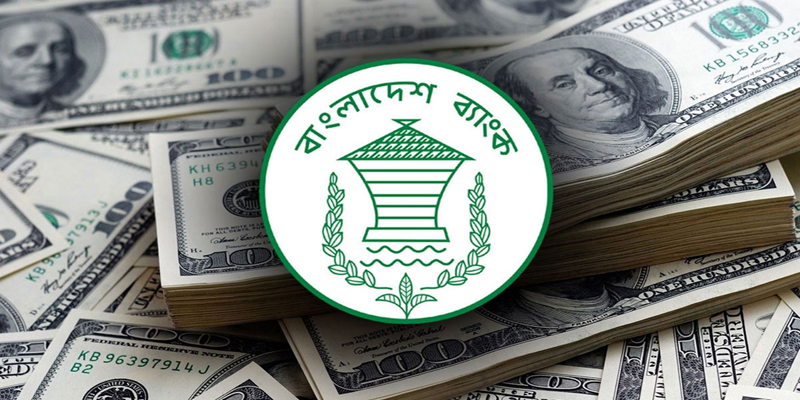
The International Monetary Fund (IMF) has waived 1.115 billion US dollars ($111.5 million) for the third tranche of the loan. Along with this, Bangladesh received loans from several other donor organizations. As a result, the foreign exchange reserves, which have been declining for a long time, have returned to a positive trend.
In August 2021, Bangladesh Bank's reserves reached a maximum of 48 billion dollars (48 billion). At the end of the recently concluded fiscal year 2023-24, the reserves stood at US$ 2,682 crore (26.82 billion) as on June 30. And according to International Monetary Fund (IMF) accounting system BPM-6, the reserve is now two thousand 184 million dollars (21.84 billion).
Apart from this, there is another account of Bangladesh Bank's net or actual reserves, which is only given to the IMF and not disclosed. However, the central bank has officially announced that the reserves have increased by more than two billion dollars after receiving loan assistance.
According to the Bangladesh Bank spokesperson's office, at the end of June 30 of this year, Bangladesh Bank's net international reserve (NIR) or expendable reserve is one thousand six billion US dollars ($16 billion).
With this reserve of 5.5 billion dollars per month, three months of import expenses can be met. Normally a country should have reserves equal to minimum 3 months import cost. By that standard, Bangladesh is now in a marginal position. One of the indicators of a country's economy is foreign exchange reserves.
Bangladesh is taking a total loan of 4.70 billion dollars from the IMF. The first installment of the loan of $476.27 million came in February 2023. The second installment of around $681 million came in December last year. The entire amount of the loan will be repaid in a total of seven installments.
Bangladesh's foreign exchange reserves are under severe pressure due to various global and domestic factors and increased import costs post-Covid-19. The current account deficit also widened due to large trade deficits. Depreciation of the rupee against the dollar will affect the price of energy and imports.
In July 2022, Bangladesh applied for a $4.7 billion loan from the IMF to increase its rapidly dwindling reserves. After several stages of negotiations, the company approved the loan agreement in November of that year.
On January 30, 2023, Bangladesh signed a loan agreement of 4.7 billion dollars with the IMF. After three days, the company released 476 million 62 million 70 thousand dollars in the first installment. Then on December 16 last year, the second installment of 682 million dollars was released.
As per the agreement, the loan is to be fully repaid in seven installments till 2026. Subsequent installments of the second installment were to have equal amounts. But Bangladesh wants more money in the third and fourth installments as the reserves are further reduced. The agency agreed to pay $111.5 million in the third tranche instead of $680 million, having already met several tough conditions and promised more major reforms in the future. However, the total loan amount and tenure will remain the same.
At the request of Bangladesh, the net reserve target for the fourth tranche at the end of June was reduced by 5.34 billion dollars to 14. 76 billion dollars has been set. The IMF later revised down the target at the government's request.
How is the reserve created?
Foreign exchange reserves are made up of dollars received from remittances, export earnings, foreign investment, loans from various countries and international organizations. Again, the foreign currency goes through the expenditure incurred in various sectors including import expenditure, loan interest or installment payment, foreign workers' salary and allowances, tourist or student education. Thus, the dollar remaining after income and expenditure is added to the reserve. And if the cost is more, the reserve decreases.












0 Comments